Publications
This is my list of publications and preprints. The ‘dagger’ symbol, i.e. \( {}^\dagger \), indicates equal contribution. The ‘double dagger’ symbol, i.e. \( {}^\ddagger \), is listed for authors that jointly directed said work.
Featured Publications
Abstract
The exceptionally rapid development of highly flexible, reusable artificial intelligence (AI) models is likely to usher in newfound capabilities in medicine. We propose a new paradigm for medical AI, which we refer to as generalist medical AI (GMAI). GMAI models will be capable of carrying out a diverse set of tasks using very little or no task-specific labelled data. Built through self-supervision on large, diverse datasets, GMAI will flexibly interpret different combinations of medical modalities, including data from imaging, electronic health records, laboratory results, genomics, graphs or medical text. Models will in turn produce expressive outputs such as free-text explanations, spoken recommendations or image annotations that demonstrate advanced medical reasoning abilities. Here we identify a set of high-impact potential applications for GMAI and lay out specific technical capabilities and training datasets necessary to enable them. We expect that GMAI-enabled applications will challenge current strategies for regulating and validating AI devices for medicine and will shift practices associated with the collection of large medical datasets.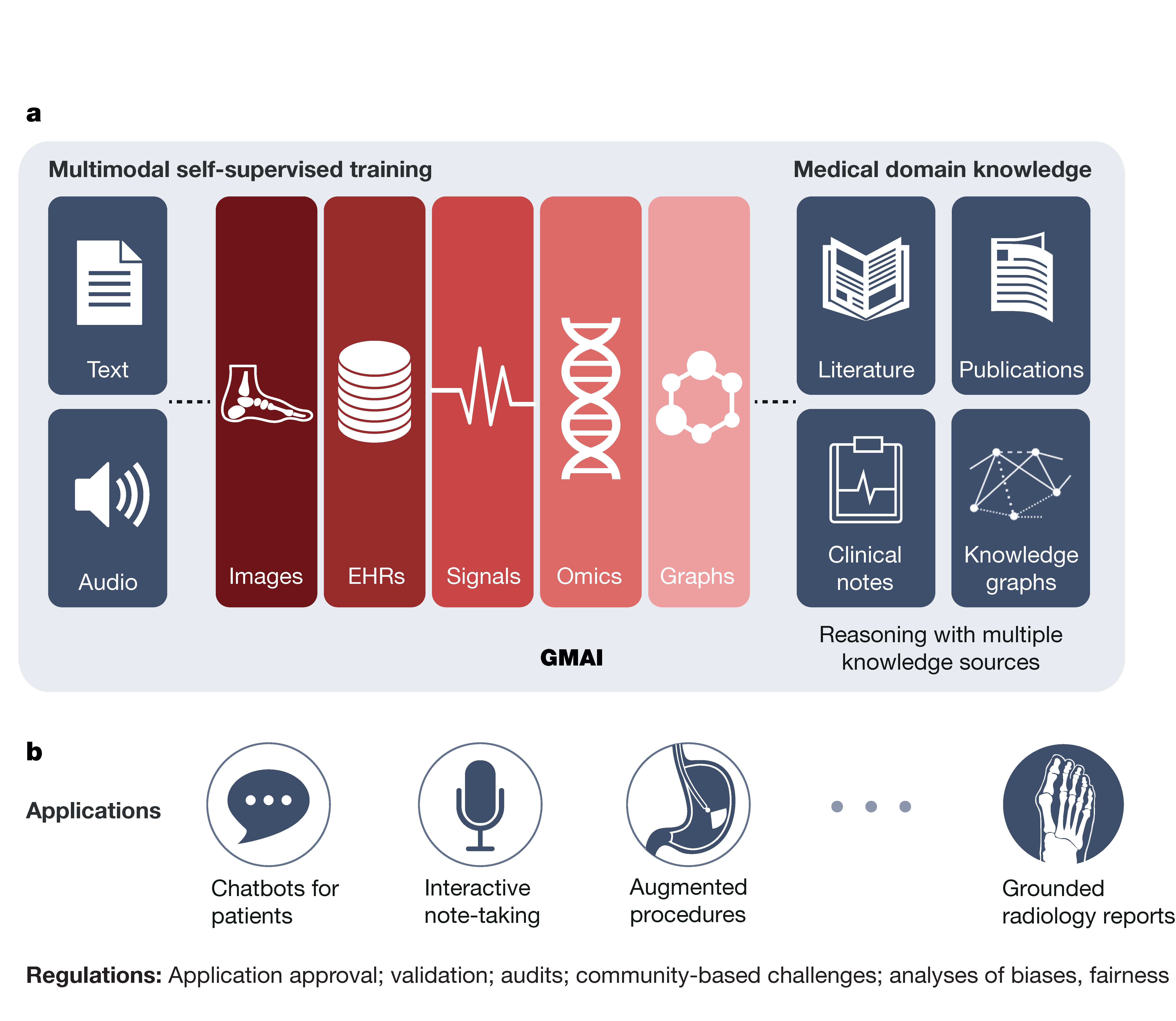
Abstract
Predicting how different interventions will causally affect a specific individual is important in a variety of domains such as personalized medicine, public policy, and online marketing. However, most existing causal methods cannot generalize to predicting the effects of previously unseen interventions (e.g. a newly invented drug), because they require data for individuals who received the intervention. Here, we consider zero-shot causal learning: predicting the personalized effects of novel, previously unseen interventions. To tackle this problem, we propose CaML, a causal meta-learning framework which formulates the personalized prediction of each intervention’s effect as a task. Rather than training a separate model for each intervention, CaML trains as a single meta-model across thousands of tasks, each constructed by sampling an intervention and individuals who either did or did not receive it. By leveraging both intervention information (e.g., a drug’s attributes) and individual features (e.g., a patient’s history), CaML is able to predict the personalized effects of unseen interventions. Experimental results on real world datasets in large-scale medical claims and cell-line perturbations demonstrate the effectiveness of our approach. Most strikingly, CaML’s zero-shot predictions outperform even strong baselines which have direct access to data of considered target interventions.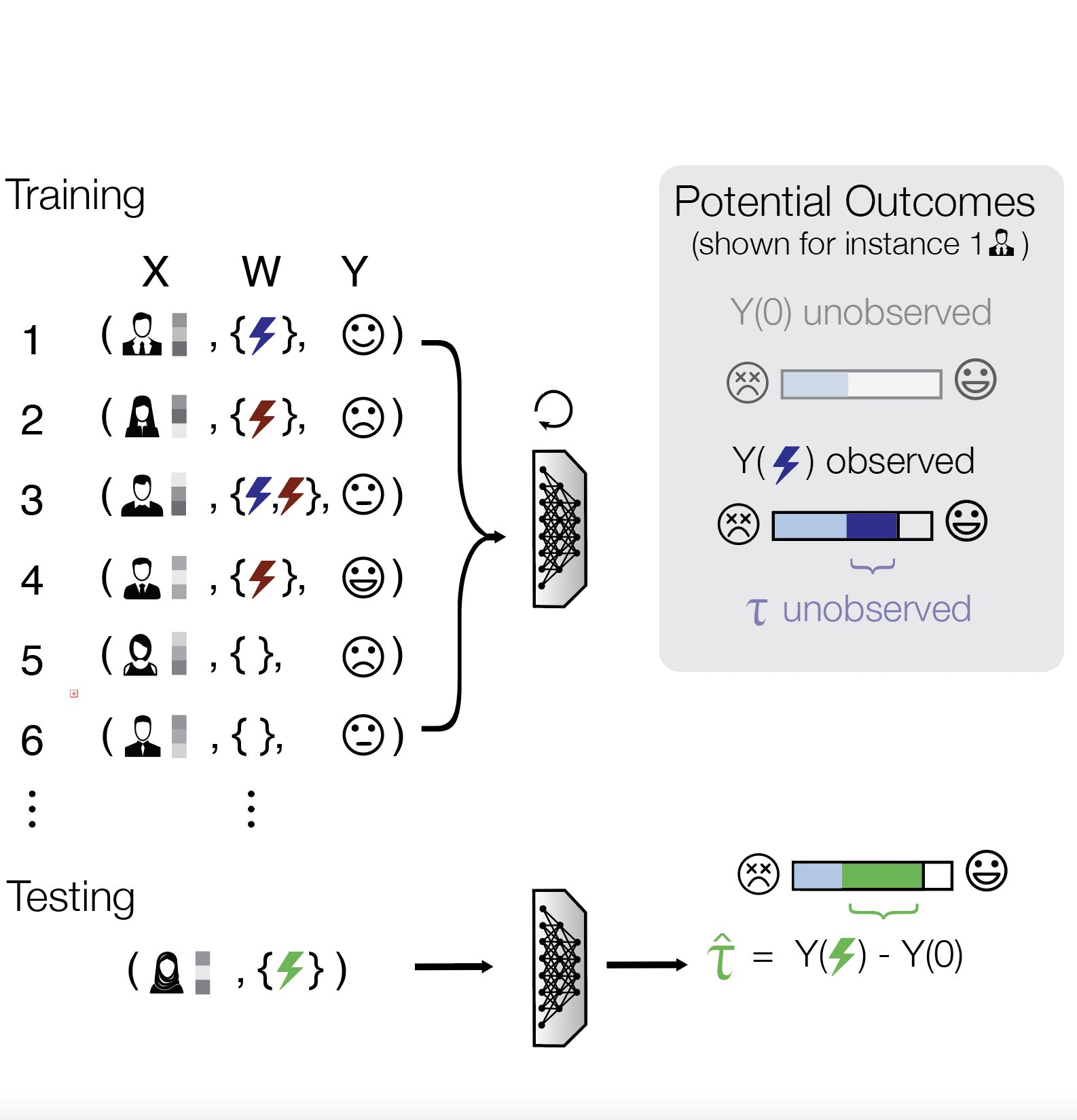
Abstract
We propose a novel approach for preserving topological structures of the input space in latent representations of autoencoders. Using persistent homology, a technique from topological data analysis, we calculate topological signatures of both the input and latent space to derive a topological loss term. Under weak theoretical assumptions, we construct this loss in a differentiable manner, such that the encoding learns to retain multi-scale connectivity information. We show that our approach is theoretically well-founded and that it exhibits favourable latent representations on a synthetic manifold as well as on real-world image data sets, while preserving low reconstruction errors.
Abstract
Sepsis is a life-threatening host response to infection that is associated with high mortality, morbidity, and health costs. Its management is highly time-sensitive because each hour of delayed treatment increases mortality due to irreversible organ damage. Meanwhile, despite decades of clinical research, robust biomarkers for sepsis are missing. Therefore, detecting sepsis early by utilizing the affluence of high-resolution intensive care records has become a challenging machine learning problem. Recent advances in deep learning and data mining promise to deliver a powerful set of tools to efficiently address this task. This empirical study proposes two novel approaches for the early detection of sepsis: a deep learning model and a lazy learner that is based on time series distances. Our deep learning model employs a temporal convolutional network that is embedded in a multi-task Gaussian Process adapter framework, making it directly applicable to irregularly-spaced time seriesdata. In contrast, our lazy learner is an ensemble approach that employs dynamic time warping. We frame the timely detection of sepsis as a supervised time series classification task. Consequently, we derive the most recent sepsis definition in an hourly resolution to provide the first fully accessible early sepsis detection environment. Seven hours before sepsis onset, our methods improve area under the precision–recall curve from 0.25 to 0.35 and 0.40, respectively, over the state of the art. This demonstrates that they are well-suited for detecting sepsis in the crucial earlier stages when management is most effective.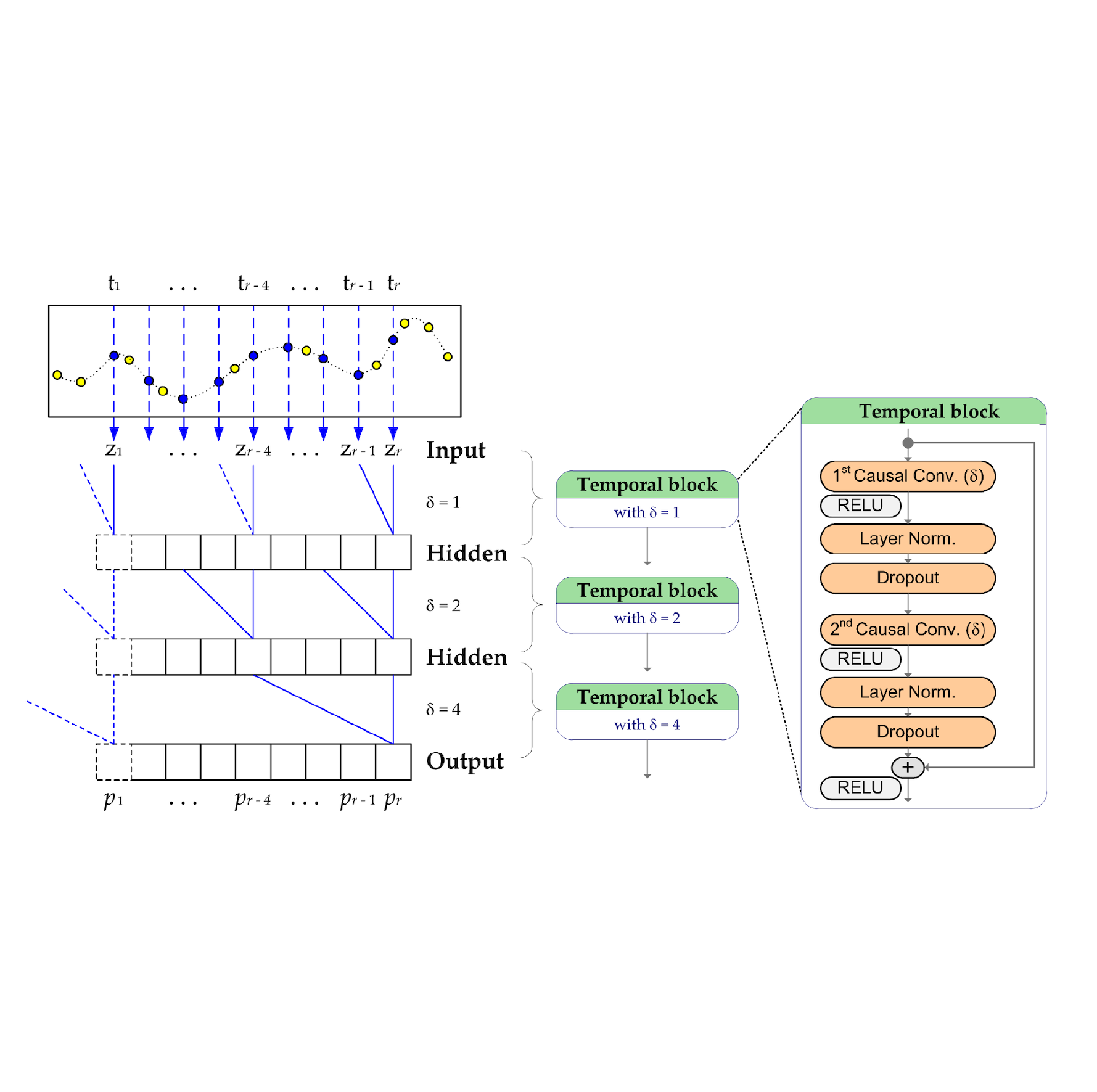
Abstract
Despite decades of clinical research, sepsis remains a global public health crisis with high mortality, and morbidity. Currently, when sepsis is detected and the underlying pathogen is identified, organ damage may have already progressed to irreversible stages. Effective sepsis management is therefore highly time-sensitive. By systematically analysing trends in the plethora of clinical data available in the intensive care unit (ICU), an early prediction of sepsis could lead to earlier pathogen identification, resistance testing, and effective antibiotic and supportive treatment, and thereby become a life-saving measure. Here, we developed and validated a machine learning (ML) system for the prediction of sepsis in the ICU. Our analysis represents the largest multi-national, multi-centre in-ICU study for sepsis prediction using ML to date. Our dataset contains 156,309 unique ICU admissions, which represent a refined and harmonised subset of five large ICU databases originating from three countries. Using the international consensus definition Sepsis-3, we derived hourly-resolved sepsis label annotations, amounting to 26,734 (17.1%) septic stays. We compared our approach, a deep self-attention model, to several clinical baselines as well as ML baselines and performed an extensive internal and external validation within and across databases. On average, our model was able to predict sepsis with an AUROC of 0.847±0.050 (internal out-of sample validation) and 0.761±0.052 (external validation). For a harmonised prevalence of 17%, at 80% recall our model detects septic patients with 39% precision 3.7 hours in advance.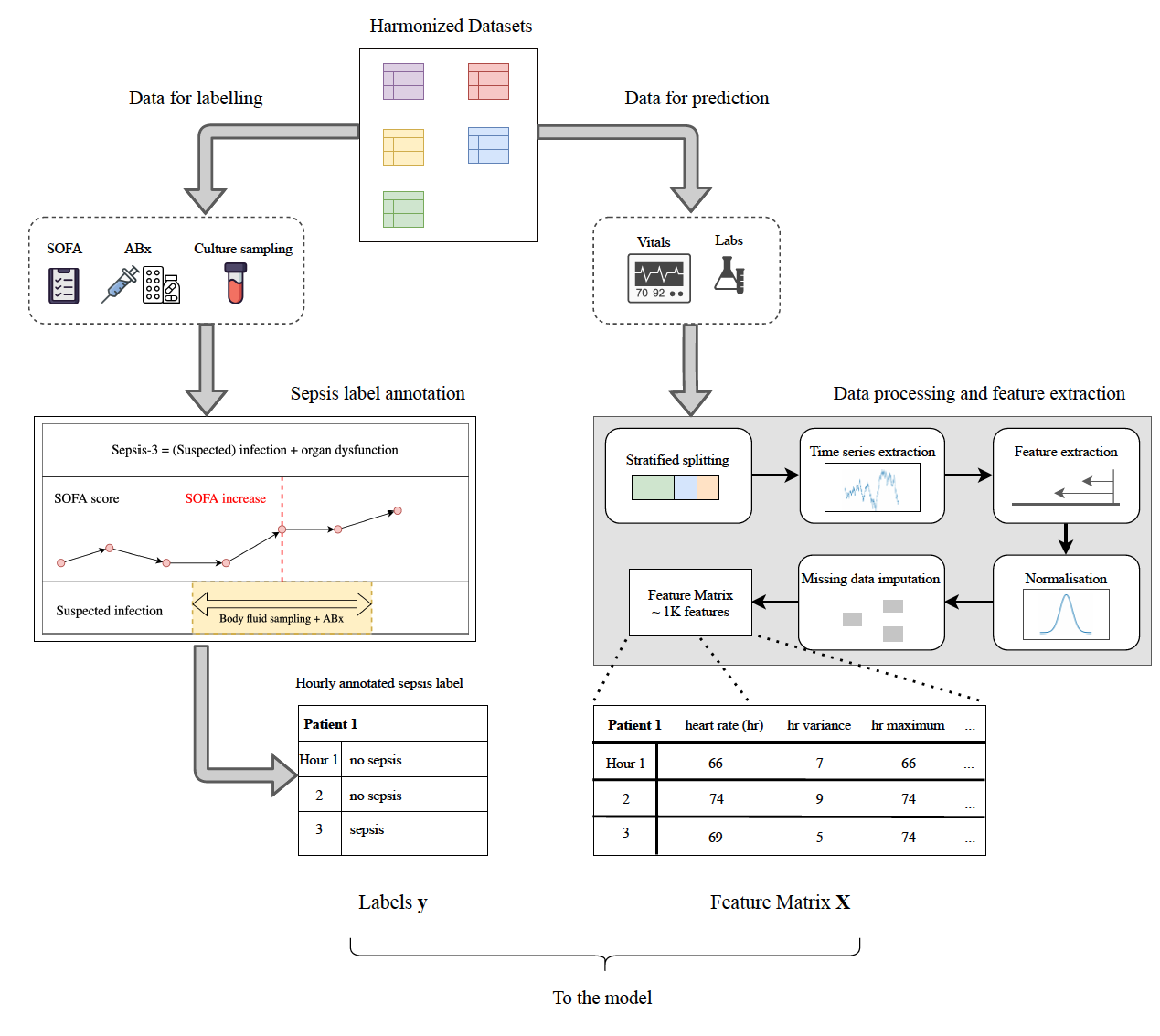
Abstract
Background: Sepsis is among the leading causes of death in intensive care units (ICUs) worldwide and its recognition, particularly in the early stages of the disease, remains a medical challenge. The advent of an affluence of available digital health data has created a setting in which machine learning can be used for digital biomarker discovery, with the ultimate goal to advance the early recognition of sepsis. Objective: To systematically review and evaluate studies employing machine learning for the prediction of sepsis in the ICU. Data Sources: Using Embase, Google Scholar, PubMed/Medline, Scopus, and Web of Science, we systematically searched the existing literature for machine learning-driven sepsis onset prediction for patients in the ICU. Study Eligibility Criteria: All peer-reviewed articles using machine learning for the prediction of sepsis onset in adult ICU patients were included. Studies focusing on patient populations outside the ICU were excluded. Study Appraisal and Synthesis Methods: A systematic review was performed according to the PRISMA guidelines. Moreover, a quality assessment of all eligible studies was performed. Results: Out of 974 identified articles, 22 and 21 met the criteria to be included in the systematic review and quality assessment, respectively. A multitude of machine learning algorithms were applied to refine the early prediction of sepsis. The quality of the studies ranged from “poor” (satisfying ≤ 40% of the quality criteria) to “very good” (satisfying ≥ 90% of the quality criteria). The majority of the studies (n = 19, 86.4%) employed an offline training scenario combined with a horizon evaluation, while two studies implemented an online scenario (n = 2, 9.1%). The massive inter-study heterogeneity in terms of model development, sepsis definition, prediction time windows, and outcomes precluded a meta-analysis. Last, only two studies provided publicly accessible source code and data sources fostering reproducibility. Limitations: Articles were only eligible for inclusion when employing machine learning algorithms for the prediction of sepsis onset in the ICU. This restriction led to the exclusion of studies focusing on the prediction of septic shock, sepsis-related mortality, and patient populations outside the ICU. Conclusions and Key Findings: A growing number of studies employs machine learning to optimize the early prediction of sepsis through digital biomarker discovery. This review, however, highlights several shortcomings of the current approaches, including low comparability and reproducibility. Finally, we gather recommendations how these challenges can be addressed before deploying these models in prospective analyses. Systematic Review Registration Number: CRD42020200133.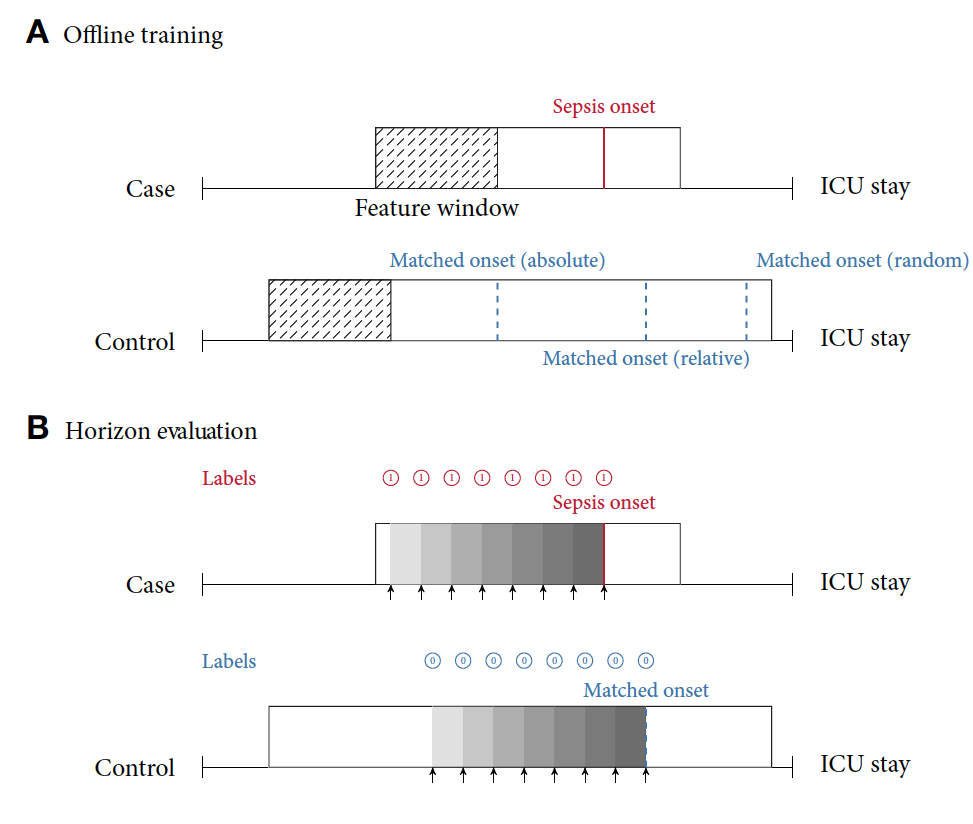
All Publications
For the most up-to-date list of publications, refer to my google scholar profile.
2024
Reverse Image Retrieval Cues Parametric Memory in Multimodal LLMs
Jialiang Xu\(^\dagger\), Michael Moor\(^\dagger\), Jure Leskovec.
Preprint arXiv:2405.18740, 2024.
AgentClinic: a Multimodal Agent Benchmark to Evaluate AI in Simulated Clinical Environments
Samuel Schmidgall, Rojin Ziaei, Carl Harris, Eduardo Reis, Jeffrey Jopling, Michael Moor.
Preprint arXiv:2405.07960, 2024.
Almanac: Retrieval-Augmented Language Models for Clinical Medicine
Cyril Zakka, Akash Chaurasia, Rohan Shad, Alex R. Dalal, Jennifer L. Kim, Michael Moor, Kevin Alexander, Euan Ashley, Jack Boyd, Kathleen Boyd, Karen Hirsch, Curt Langlotz, Joanna Nelson, William Hiesinger.
NEJM AI, Volume 1, 2024.
Evaluating General Vision-Language Models for Clinical Medicine
Yixing Jiang, Jesutofunmi A. Omiye, Cyril Zakka, Michael Moor, Haiwen Gui, Shayan Alipour, Seyed Shahabeddin Mousavi, Jonathan H. Chen, Pranav Rajpurkar, Roxana Daneshjou.
Preprint medRxiv, 2024.
2023
Foundation Models for Generalist Medical Artificial Intelligence
Michael Moor\(^\dagger\), Oishi Banerjee\(^\dagger\), Zahra Shakeri Hossein Abad, Harlan M. Krumholz, Jure Leskovec, Eric J. Topol\(^\ddagger\), and Pranav Rajpurkar\(^\ddagger\).
Nature 616, 259–265 (2023).
Zero-shot Causal Learning
Hamed Nilforoshan\(^\dagger\), Michael Moor\(^\dagger\), Yusuf Roohani, Yining Chen, Anja Šurina, Michihiro Yasunaga, Sara Oblak, Jure Leskovec. Accepted to NeurIPS 2023 (Spotlight).
Med-Flamingo: a Multimodal Medical Few-shot Learner
Michael Moor\(^\dagger\), Qian Huang\(^\dagger\), Shirley Wu, Michihiro Yasunaga, Cyril Zakka,
Yash Dalmia, Eduardo Pontes Reis, Pranav Rajpurkar, Jure Leskovec.
Accepted to Machine Learning for Health 2023 (ML4H).
🏆: featured in Huggingface daily papers, in NLP News “🥇Top ML Papers of the Week” and in the medical AI newsletter Dr. Penguin.
Style-Aware Radiology Report Generation with RadGraph and Few-Shot Prompting Benjamin Yan, Ruochen Liu, David E. Kuo, Subathra Adithan, Eduardo Pontes Reis, Stephen Kwak, Vasantha Kumar Venugopal, Chloe P. O’Connell, Agustina Saenz, Pranav Rajpurkar\(^\ddagger\), Michael Moor\(^\ddagger\) Accepted to Findings of EMNLP 2023.
Predicting sepsis using deep learning across international sites: a retrospective development and validation study
Michael Moor\(^\dagger\), Nicolas Bennet\(^\dagger\), Drago Plecko\(^\dagger\), Max Horn\(^\dagger\), Bastian Rieck, Nicolai Meinshausen, Peter Bühlmann, and Karsten Borgwardt.
eClinicalMedicine, Volume 62, 2023.
Development and Validation of a Model to Quantify Injury Severity in Real Time
Jeff Choi\(^\dagger\), Edward B. Vendrow\(^\dagger\), Michael Moor, David A. Spain.
JAMA Network Open 6 (10), e2336196-e2336196.
2022
Prediction of Recovery from Multiple Organ Dysfunction Syndrome in Pediatric Sepsis Patients
Bowen Fan, Juliane Klatt, Michael Moor, Latasha A. Daniels, Swiss Pediatric Sepsis Study, Lazaro N. Sanchez-Pinto, Philipp K. A. Agyeman, Luregn J. Schlapbach and Karsten Borgwardt. Intelligent Systems for Molecular Biology (ISMB), 2022.
Topological Graph Neural Networks
Max Horn\(^\dagger\), Edward De Brouwer\(^\dagger\), Michael Moor, Yves Moreau, Bastian Rieck\(^\ddagger\), and Karsten Borgwardt\(^\ddagger\).
International Conference on Learning Representations (ICLR), 2022.
2021
Early Prediction of Sepsis in the ICU using Machine Learning: A Systematic Review
Michael Moor\(^\dagger\), Bastian Rieck\(^\dagger\), Max Horn,
Catherine R Jutzeler\(^\ddagger\), and Karsten Borgwardt\(^\ddagger\).
Frontiers in Medicine, Volume 8, 2021.
A Survey of Topological Machine Learning Methods
Felix Hensel, Michael Moor, and Bastian Rieck.
Frontiers in Artificial Intelligence, Volume 4, 2021.
Accelerating Detection of Lung Pathologies with Explainable Ultrasound Image Analysis
Jannis Born\(^\dagger\), Nina Wiedemann\(^\dagger\), Manuel Cossio, Charlotte Buhre, Gabriel Brändle, Konstantin Leidermann, Avinash Aujayeb, Michael Moor, Bastian Rieck, and Karsten Borgwardt.
Applied Sciences, Volume 11, No. 2, 2021.
2020
Challenging Euclidean Topological Autoencoders
Michael Moor, Max Horn, Karsten Borgwardt, and Bastian Rieck.
Accepted for presentation at the NeurIPS 2020 TDA and Beyond Workshop. (Poster).
Machine Learning for Biomedical Time Series Classification: From Shapelets to Deep Learning
Christian Bock\(^\dagger\), Michael Moor\(^\dagger\), Catherine R Jutzeler, and Karsten Borgwardt.
In Artificial Neural Networks, pp. 33-71. Humana, New York, NY.
Enhancing Statistical Power in Temporal Biomarker Discovery through Representative Shapelet Mining
Thomas Gumbsch, Christian Bock, Michael Moor, Bastian Rieck, and Karsten Borgwardt.
Bioinformatics, Volume 36, Issue Supplement_2, pp. i840–i848, December 2020.
Learning Individualized Treatment Rules with Estimated Translated Inverse Propensity Score
Zhiliang Wu, Yinchong Yang, Yunpu Ma, Yushan Liu, Rui Zhao, Michael Moor, and Volker Tresp.
International Conference on Health Informatics ICHI 2020.
🏆: Best paper award.
Path Imputation Strategies for Signature Models
Michael Moor, Max Horn, Christian Bock, Karsten Borgwardt, and Bastian Rieck.
Workshop on the Art of Learning with Missing Values (Artemiss) at ICML 2020. Slides.
Topological Autoencoders
Michael Moor\(^\dagger\), Max Horn\(^\dagger\), Bastian Rieck\(^\ddagger\), Karsten Borgwardt\(^\ddagger\).
International Conference on Machine Learning (ICML), PMLR 119:7045-7054, 2020.
Recorded Talk.
Set Functions for Time Series
Max Horn, Michael Moor, Christian Bock, Bastian Rieck, and Karsten Borgwardt.
International Conference on Machine Learning (ICML), PMLR 119:4353-4363, 2020.
Recorded Talk.
Path Imputation Strategies for Signature Models of Irregular Time Series
Michael Moor, Max Horn, Christian Bock, Karsten Borgwardt, and Bastian Rieck.
Preprint, arXiv:2005.12359, 2020.
Early prediction of circulatory failure in the intensive care unit using machine learning
Stephanie L. Hyland\(^\dagger\), Martin Faltys\(^\dagger\), Matthias Hüser\(^\dagger\), Xinrui Lyu\(^\dagger\), Thomas Gumbsch\(^\dagger\),
Cristóbal Esteban, Christian Bock, Max Horn, Michael Moor, Bastian Rieck,
Marc Zimmermann, Dean Bodenham, Karsten Borgwardt\(^\ddagger\), Gunnar Rätsch\(^\ddagger\), and
Tobias M. Merz\(^\ddagger\).
Nature Medicine, Volume 26, Issue 3, pp. 364–373, March 2020.
2019
Early Recognition of Sepsis with Gaussian Process Temporal Convolutional Networks and Dynamic Time Warping
Michael Moor, Max Horn, Bastian Rieck, Damian Roqueiro, Karsten Borgwardt.
Machine Learning for Healthcare Conference (MLHC), Volume 106 of Proceedings of Machine Learning Research, pp. 2–26, August 2019. (Poster).
Neural Persistence: A Complexity Measure for Deep Neural Networks Using Algebraic Topology
Bastian Rieck\(^\dagger\), Christian Bock\(^\dagger\), Matteo Tognialli\(^\dagger\), Michael Moor, Max Horn, Thomas Gumbsch, Karsten Borgwardt.
International Conference on Learning Representations (ICLR), 2019. (Poster).
Quantification of Liver, Subcutaneous, and Visceral Adipose Tissues by MRI Before and After Bariatric Surgery
Anne Christin Meyer-Gerspach, Ralph Peterli, Michael Moor, Philipp Madörin, Andreas Schötzau, Diana Nabers, Stefan Borgwardt, Christoph Beglinger, Oliver Bieri, Bettina Wölnerhanssen.
Obesity surgery, Volume 29, Issue 9, pp. 2795-2805. Mai 2019.
2018
Association mapping in biomedical time series via statistically
significant shapelet mining
Christian Bock, Thomas Gumbsch, Michael Moor, Bastian Rieck, Damian Roqueiro, Karsten Borgwardt.
Bioinformatics, Volume 34, Issue 13, pp. i438-i446, July 2018.